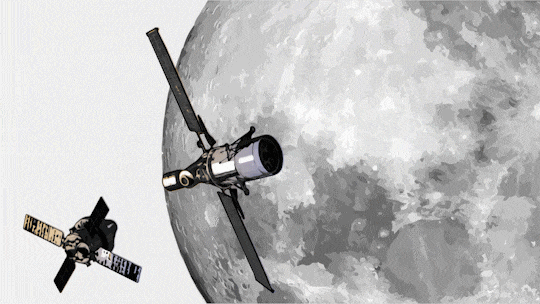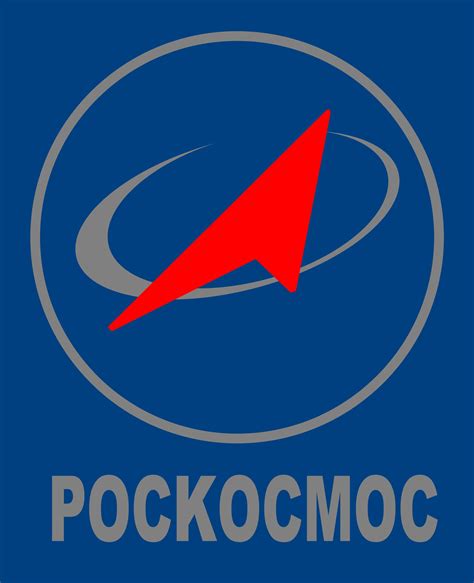Speaking of (and returning to) which, it’s time for this.

It’s time for some boring figures. Sigh. Let’s get on with it then.
Distance from Sun: 70,000,000 Km - 49,000,000 km (Because Mercury’s orbit is so eccentric, two figures have to be used, one for when it’s closest to the Sun - Aphelion - and one for when it’s furthest away - Perihelion)
Distance from Earth: (approx) 400,000 kms
Diameter: 1,076 km (about a quarter that of Earth)
Density: 3.344 g/cm
Surface gravity: 0.1654g
Satellites: None; it
is one. And our only one.
Atmosphere: None
Length of day: 29.5 Earth days
Length of year: 27 Earth days
Axial tilt: 1.542 degrees
Mass: 0.012 Earths
Volume: 0.02 Earths
Surface Temperature Range: -23 to -173 degrees Centigrade
Weather: None
Okay then, that’s done with. Back to the - more or less - fun stuff.
 Exploration of the Moon: Probes and Missions
Exploration of the Moon: Probes and Missions
As the Moon is the only planetary body we have so far explored ourselves, as in, not sent unmanned probes but actual human beings to (at the time of writing) I’m for the first and only time going to break this up into two sections, one for probes (which should be taken to be understood as unmanned) and the other for missions (where rockets carried men into space).
Probes sent
Once again, those Russians were first, with their Luna program.
 Luna 1
Launched:
Luna 1
Launched: January 2 1959
Reached Destination: January 4 1959
Type: Intended as an impactor, but failed and instead became an orbiter
Nationality: Soviet (Russian)
Results: First man-made spacecraft to achieve escape velocity from Earth, first to visit another planetary body. Studied Earth’s radiation belt and outer space. Detected the lunar magnetic field. Observed and measured the solar wind.
Photographs Taken: 0
Mission Ended: January 5 1959
Termination of Probe: In heliocentric orbit
A note here says that the Americans did not believe the Russians had reached the Moon, as they received no transmissions themselves, but it sounds like a case of sour grapes to me.
Luna 2
Launched: September 12 1959
Reached Destination: September 12 1959
Type: Impactor
Nationality: Soviet (Russian)
Results: Planted Soviet flag on surface of the Moon; confirmed previous measurement of the Van Allen belt but was unable to detect a radiation field around the Moon. Measured the solar wind flux. Became the first man-made object to impact another celestial body. Score another for the stinkin’ Commie Reds, huh?
 Photographs Taken:
Photographs Taken: 0
Mission Ended: September 13 or 14 1959
Termination of Probe: Impacted on the Moon.
In a direct response to the criticism from the USA about the previous probe, i.e. that they had made it all up, the Soviet space agency this time ensured to contact British astronomer Bernard Lovell in Manchester and provide to him all the data as the probe transmitted it. He then shared this with the American scientists, who seemingly grumbled that they still did not believe it, but no longer had any basis for such doubt.
 Pioneer 3
Launched:
Pioneer 3
Launched: December 6 1958
Reached Destination: Failed
Type: Flyby
Nationality: American
Results: Failed to reach the Moon, emulating David Bowie and falling to Earth
Photographs Taken: 0
Mission Ended: December 7 1958
Termination of Probe: Burned up in Earth’s atmosphere
Pioneer 4
Launched: March 3 1959
Reached Destination: March 3 1959
Type: Flyby
Nationality: American
Results: Provided radiation data but went off-course and so was not close enough to the Moon for its photoelectric sensor to be triggered, thus no valuable information about the Moon was received.
Photographs Taken: 0
Mission Ended: March 6 1959
Termination of Probe: In heliocentric orbit
As far as I can see, in the early space race the Russians were miles ahead. They put the first satellite into space, had the first man-made object to escape the Earth’s atmosphere, got to the Moon first, were the first to impact a satellite there, and later were the first to put a living creature (Leica the dog) and later a man into space, the first to spacewalk and the first to land a probe on Venus, the first to record sound and images on that planet. Sure, the Americans caught up, becoming the first humans to land on another planetary body, and from then on it was USA! USA! USA! all the way, but in the initial and perhaps more important early stages of space exploration, Russia, as in the Soviet Union, led the way.
The Ranger series, intended to compete with the mostly successful Luna Soviet satellite programme, could have more accurately been called Danger or Anger. The first six probes failed, and resentment arose in Congress over all the funds being appropriated for NASA with no real return; essentially a waste of money.
 Ranger 1
Launched:
Ranger 1
Launched: August 23 1961
Reached Destination: Failed; only achieved Earth orbit
Type: Flyby
Nationality: American
Results: Very little as the probe didn’t leave Earth orbit. Some miscellaneous data about radiation or some s
hit.
Photographs Taken: 0
Mission Ended: August 30 1961
Termination of Probe: Burned up in Earth atmosphere after batteries ran down
After no less than
four failed attempts at launch, plagued by problems and no doubt leaving the Soviets pissing themselves laughing at the decadent Americans’ incompetence, Ranger 1 finally launched on August 23. Immediately it began having problems and never got out of Earth orbit, hanging around until its batteries went flat and it fell back to Earth. Not quite the success NASA had anticipated or hoped for. Reports of many Russian sides being split are impossible to corroborate at this time.
Ranger 2
Launched: November 18 1961
Reached Destination: Failed
Type: Test
Nationality: American
Results: n/a
Photographs Taken: 0
Mission Ended: November 20 1961
Termination of Probe: Fell back to Earth and burned up
If at first you don’t succeed, balls it up again. Well, that’s not quite fair.
Ranger 2 was not meant to ever reach the Moon, it was merely a test vehicle to try to iron out the bugs that had bedevilled its predecessor. As it happened, it didn’t. Iron them out, that is, and it suffered from similar problems and only achieved low Earth orbit. Back to the drawing board, guys!
Ranger 3
Launched: January 26 1962
Reached Destination: Failed
Type: Flyby (intended as an impactor)
Nationality: American
Results: Complete failure
Photographs Taken: 0 (some very weak images were taken but nothing of interest)
Mission Ended: January 31 1962
Termination of Probe: In heliocentric orbit
If Russian pilots believed they were dogged by gremlins, little creatures who destroyed the electrics and mechanics in their planes during World War II, they must have moved over to live in America, as a year into the Ranger programme, three after the USSR had proudly planted the flag of the motherland on the Moon, NASA still couldn’t even line up their probes to reach the damn thing. Talk about hitting the broad side of a barn! Errors in telemetry sent Ranger 3 off course yet again, and then its computer died (damn you Bill Gates!) and that was more or less the end of it. Missed the Moon by several tens of thousands of kilometers and decided to spend the rest of its life in retirement in the sun, as it were. Noises began to emanate from Congress. “One more!” NASA pleaded. “Just one more. Or, maybe two. Three at the outside. Four, tops! We promise!”
Ranger 4
Launched: April 23 1962
Reached Destination: April 26 1962
Type: Impactor
Nationality: Proudly made in America
 Results:
Results: n/a
Photographs Taken: 0
Mission Ended: April 26 1962
Termination of Probe: Crashed on lunar surface.
Hey, at least this time they reached the Moon! Problem was, everything failed. Although the launch was for once successful, problems began once the rocket lifted off and the solar panels failed to deploy on the satellite, then the computer grumped “F
uck this for a game of soldiers. Moon me arse!” and shut down. With no way to contact Ranger 3 and no way to control it, NASA could do nothing as it ploughed down onto the surface of the Moon without sending back any data. But at least the United States of America had finally landed something on another planetary body, and more, they landed on the far side of the Moon, not like those cowardly Russkies who had to land on the near side. Pussies.
NASA crowed that their probe was more sophisticated than Luna 2, which may be true, but the way you win the game is to put the ball in the back of the net, and the Soviet Union had proven to be (sorry not sorry if the football terminology confuses you: make up your own analogy) Manchester United while the USA was barely hanging on in the last relegation spot. Like, the
Titanic may have been a hell of a lot more sophisticated than, say, the
Mary Rose, but both went down the same way. Fu
cking Americans.
They were convinced they could do better. They had to, given all the taxpayer dollars they’d spent for nothing, and it wouldn’t be hard to do better anyway. So, fifth time lucky?
Ranger 5
Launched: October 18 1962
Reached Destination: October 21 1962
Type: Impactor
Nationality: American
Results: Another failure
Photographs Taken: 0
Mission Ended: October 21 1962
Termination of Probe: In heliocentric orbit
Close, but no cigar! Again the computer had a melt-down, switching, for some reason, from solar power to battery power, which is, I suppose, like seeing your laptop is down to three percent and, having plugged it in, removing the lead again. Or something. Anyway, the batteries were never built to last that long, and what do you know? They didn’t.
Ranger 5 came the closest to the Moon (other than the one that crashed there of course), almost 450 miles short. Oooh! So close! Then off it went, riding into the sunset and leaving NASA techs tearing out their hair and no doubt congressmen and women and senators tearing up proposals for budgets.
Oh, but surely the next one would be the charm?
Yeah, about that…
In 1963 Congress had finally had enough and cut the budget for Ranger, slashing it by fifty percent. Thirteen planned probes had now to be cut to only nine, which meant NASA had only four last chances to make this work. It’s not surprising that their budget was halved: in many ways, the US Congress is like a bunch of investors, and one thing investors want is a return on their money. If they couldn’t get it back financially, Congress would want it back in terms of results, and so far, NASA had produced neither. In fact, all they had done was take the funds and basically piss them away on unreliable and shaky projects which either crashed, burned up or joined an increasingly large conga-line around the Sun. Something had to be done, or America would continue to be lampooned on Soviet State Television, probably, becoming the butt of such sarcastic retorts as “Da, comrade, I will believe that when an American reaches the Moon!”.
They set up an internal board of inquiry to try to get to the heart of why they were so s
hit at making probes, and one of the issues that surfaced was the involvement of the US Air Force, so that was terminated. Now NASA would have complete control and oversight over their own projects. They also bit the bullet and admitted they weren’t actually all that good at designing probes, and so outsourced the manufacture of the next Ranger probes to people who actually knew what they were doing. As 1964 began, they were ready to try again, fully aware that they were now on borrowed time. They had to show results or this time they would be completely shut down, and that would be it for the US space programme.
In terms of timing, it was both the best and the worst time for NASA. The US President had just been assassinated two months previous, and the nation was reeling from the shock. With his Vice-President, Lyndon Johnson, now in the White House, nobody was sure what the new president’s view on NASA’s money-down-the-drain record would be; would he lobby Congress to give them more time (and money) or less, or would he rely on and trust their recommendations, giving the space agency a short time in which to impress the new POTUS?
At the same time, with the country at its lowest ebb, the time might be right for a boost in morale, and if NASA could supply that - show that the Commies would not have it all their own way, and demonstrate that while the present was dark as night, the future could be bright - they might turn the weight of public opinion towards instead of against them. It really was make-or-break time for NASA, and they knew it.
Unfortunately, things did not quite go to plan.